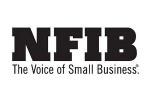WASHINGTON — Now that we’ve entered the second half of the year, it’s a good time for dry cleaners to stop and evaluate some of the basics of their business — such as marketing, maintaining their online presence and fine-tuning their hiring and retention practices — to make sure initiatives that might have been started at the beginning of 2024 are keeping up with the times.
This was the focus of “Small Business Mid-Year Checkup — Trends and Tips for 2024,” an online discussion held by the National Federation of Independent Business (NFIB), and hosted by Beth Milito, executive director of NFIB’s Small Business Legal Center, and Holly Wade, the executive director of the NFIB Research Center.
Who Are Your Customers (and Who Aren’t)?
For cleaners who are focused on the day-to-day work, marketing is something that can fall through the cracks of a busy day.
“We know that it can be a bit overwhelming, very time-consuming and frustrating to figure out how to best market your products or services to your customer base,” Wade says. “So, a tip that we have found very helpful in talking to small business owners is focusing your efforts on the right clients.”
Determining who fits into this category requires owners and managers delving into their existing client base.
“Who are those who you want to spend most of your energy and resources trying to capture and retain?” Wade asks. “And who are not your clients? It’s important you know not to spend your valuable time and resources in capturing those clients that aren't likely to patronize your business.”
Once you have an idea of who the existing, profitable customers are, owners can start to make the time and effort to market to similar groups who aren’t customers — yet.
“We know that things can get really busy in operating your business, but take a step back and think it through,” Wade says. “Why do they buy from you? Why should a new customer buy from you? What specifically do you offer that's different from your competition?
Part of this is sharing the story of your business with current and potential customers.
“What specifically is unique about your business?” Wade asks. “Whether it's the product or service that you sell, or the unique story of you as the owner can highlight, having you stand out is a powerful marketing strategy, where you can distinguish yourself from other businesses in your industry.”
The other element of effective marketing is sending the message that you can solve a problem the customer has.
“For instance, say you're a laundromat, and you have store hours or hours of operation that are a bit different from your competitors,” Wade says. “That might be the distinguishing value of being available to those who would like to either drop off early or drop off late, or if you have environmentally friendly supplies or inventories that are distinctly different from your competitors’. If some clients are looking for that, that's a problem that you would be able to solve.”
Making the Connection
Once the marketing efforts have brought people into the store, it’s important to forge a bond with that customer to bring in repeat business.
“One of the most important aspects of operating a business is the relationships that you have with customers,” Wade says. “This is often where small business owners stand out compared to other competitors — one of the unique benefits of a small business is that customers often have a connection with the owner. They know who the owner is. It’s a relationship that you have with your customer base, and the relationship that you can foster with new clients.”
Consistent contact is the key to creating and nurturing these relationships.
“It’s about growing a contact list of your customers, and reaching out to them on a regular basis,” Wade says. “They are reminded about what service or product you have that can solve their problem, you're still open for service and you're looking forward to having them as a returning customer.”
Maintaining a list of addresses and email addresses is essential for this consistent contact.
“We know that this is often very time-consuming to have this established and keeping it fresh and up to date, so that you're not missing out on potential sales,” Wade says, “but it’s all about getting the word out.
Making a Plan
Another element of effective marketing is to do it consistently. It’s easy to let it slide when the days get hectic, but sporadic marketing loses its effectiveness.
“We've had a number of speakers talk about how to maximize your time in outreach for marketing purposes, and planning content,” Wade says.
One of the simplest ways to stay on track is by using a calendar, plotting things out in advance, and taking notice of holidays, seasonal events and other predictable opportunities.
“If it's time for fall or spring cleaning for house cleaning services, for instance, think through the seasonal aspect of your business and whether it makes sense to tailor your messaging,” Wade says.
Making this calendar accessible to the company’s staff also has benefits.
“Get marketing plans on a calendar and have that calendar available for you and your employees so they know what's coming up as far as outreach to your customers,” Wade says. “Also, your employees might have some really great ideas about ways to reach out to your customers — something they might think would be helpful to have on the schedule. Have it on the calendar so that you're reminded that this is a potential opportunity.”
When planning in advance, business owners can also plan to recycle their content and still have it be effective.
“It might be the same message with a different graphic for the seasonality of it, so that it looks up to date,” Wade says. “Time is one of the most, if not the most, valuable resources of small-business owners, and we certainly don't think that reinventing the wheel is a good use of time. So, have messaging available for recycling, and then tailor it for where you have it placed in the calendar.”
Come back Tuesday for Part 2 of this series, where we’ll examine how dry cleaners can boost their online presence, along with tips on handling negative reviews.
Have a question or comment? E-mail our editor Dave Davis at [email protected].













































































































